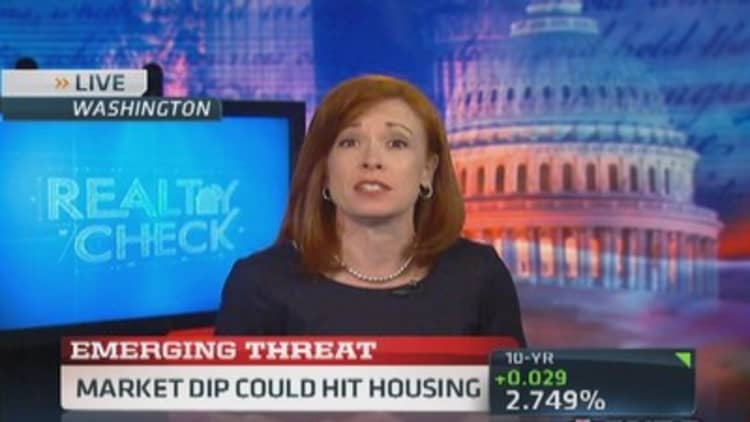
Sales of newly built homes have weakened considerably over the past few months, erasing gains made in the third quarter of the year. While sales continue to improve from a year ago, 2013 was still the sixth-worst year for the nation's builders. A basic profile of people who buy new homes may provide explanations as to why new home sales are recovering more slowly than those of existing homes: New home buyers are less likely to be investors and more likely to need a mortgage.
"New homes are very unlikely to be sold to an investor, the leading cause of high cash sales of existing homes," noted David Crowe, chief economist for the National Association of Home Builders. "And, new homes typically cost more than existing homes, making cash an even harder hurdle."
The median price of an existing home in December was $198,000, according to the National Association of Realtors, while that of a newly built home was $270,200, according to the U.S. Census. Price growth for new homes is easing slightly, but builders are hard-pressed to offer bargains.
"When the median price rises, it signifies that there are fewer homes available on the inexpensive end of the spectrum, which is problematic when job and income growth have been lackluster," IHS Global's Patrick Newport said in a note to investors. "Construction costs have been accelerating year-on-year for the past five months, causing prices to mount despite easing inventories."
(Read more: All-cash offers crushing first-time homebuyers)
That's why all-cash is king in the existing home market, where there are still some bargain-priced homes. All-cash buyers made up at least 32 percent of buyers of existing homes in the month, according to the Realtors. Crowe said just 6 percent of new home buyers used all cash in the fourth quarter of 2013. That'is because there are few investors in the new home market, while investors have been fueling the low end of the existing home market and driving sales overall higher.
A still-tight mortgage market is also having an outsized negative impact on the new home market. First-time home buyers, who have historically been a major cohort for the home builders, are more dependent on the mortgage market, which has only loosened very slightly in the past year. The FHA, the government insurer of low down payment loans, has been a favorite among first-time buyers, but that product is now more expensive, adding to the first timer's absence in the market.
At the beginning of 2013, FHA mortgages were used in about one of every two home purchases by a first-time buyer, according to the latest Campbell/Inside Mortgage Finance Housing Pulse Tracking Survey. By December that had dropped to 39.6 percent, thanks to higher insurance premiums and changes in how long insurance must be paid.
(Read more: Real estate's least sexy sector is red hot)
New homes are now making up a far smaller share of total U.S. home sales, just 7.7 percent in 2013. During the housing boom years, they averaged about 15-20 percent of total annual home sales.
"In reality, new home sales to me is simply the best gauge of 'end-user' demand, which of course is hugely important. But the persistent divergence between new sales and existing highlight just how powerful the 'transitory' investor trade has actually been," said Mark Hanson, a California-based housing analyst.
That is worrisome, Hanson added, because should investors begin to leave the market, sales volume and consequently home prices will fall dramatically.
(Read more: Construction up, but are we building too many houses?)
—By CNBC's Diana Olick. Follow her on Twitter @Diana_Olick.
Questions?Comments? facebook.com/DianaOlickCNBC


